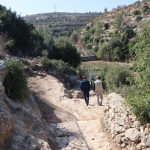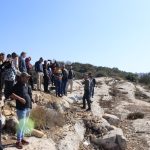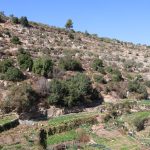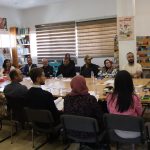On Wednesday, November 6th, a distinguished delegation visited the Palestinian villages of Hussan and Battir and the activities of Italian-funded project. The visit was attended by Domenico Bellato – Consul General of Italy in Jerusalem; Mirko Tricoli – Head of the Italian Agency for Development Cooperation (AICS) Jerusalem office; Lily Neyestani-Hailu – Head of UNESCO Office in Ramallah; Ciro Fiorillo – Head of the FAO Office in Jerusalem; representatives from the Ministries of Agriculture and of Tourism and Antiquities ; and the mayors of Hussan and Battir.
Enhancing tourism through the rehabilitation of the historic landscape, including its agricultural terraces and water resources, while fostering social and agro-economic development in the area, is the primary focus of the project in Battir, a village renowned for its UNESCO World Heritage-listed agricultural terraces and rich cultural landscape.
The delegation visited several key sites in Battir, including Ein el-Hawiya and Ein Jami’, as well as the agricultural terraces that are at the heart of the project. They also toured Al Khirbah and Ein el-Balad, with a particular focus on the restoration efforts of the terraces and traditional pathways. An open discussion at Battir Municipality followed the field visit, where the officials highlighted the progress of the project and its impact on both heritage conservation and local livelihoods.
The restoration of traditional structures (led by UNESCO and the MoTA), such as agricultural terraces, and irrigation systems, is underway, with a focus on environmental protection and the promotion of sustainable tourism. Additionally, market-driven agricultural interventions (led by FAO and the MoA) are being implemented to revive and improve traditional farming practices and organic products, boosting local livelihoods and helping create jobs.
The delegation was then hosted at the premises of the Battir Women’s Cooperative Society for Food Processing and Production, where delegates enjoyed a meal featuring locally produced foods. The cooperative is a key partner in the project, working to create sustainable livelihoods for local farmers by processing and marketing Battir’s unique agricultural products.
This collaborative effort highlights the importance of integrating cultural heritage preservation with sustainable development. By ensuring the long-term maintenance and responsible use of Battir’s cultural landscape, the project aims to preserve its historical significance while enhancing the local economy and quality of life for its residents.





